Resident Crews of the International Space Station (ISS)
![]()
ISS: Expedition 22 |
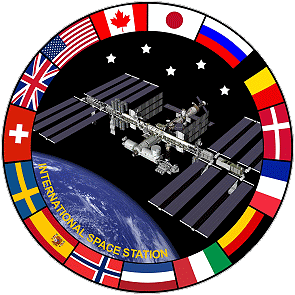 |
 |
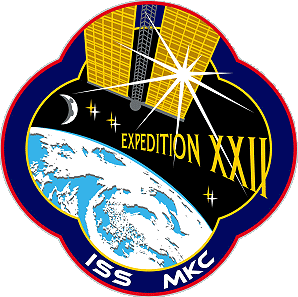 |
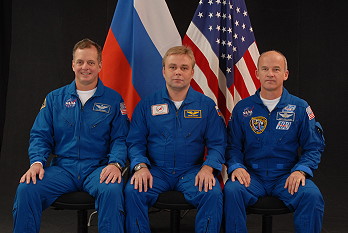 |
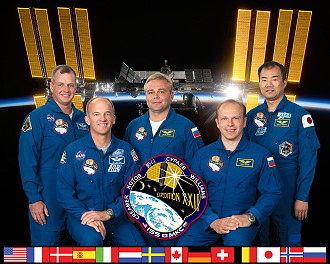 |
alternative crew photo |
alternative crew photo |
alternative crew photo |
|
 |
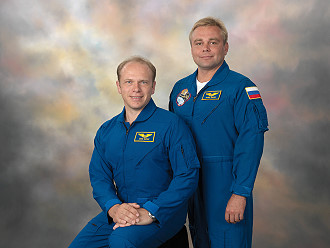 |
alternative crew photo |
alternative crew photo |
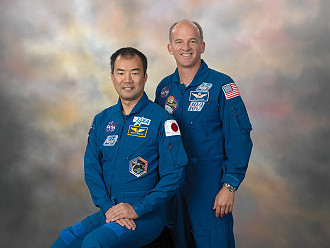 |
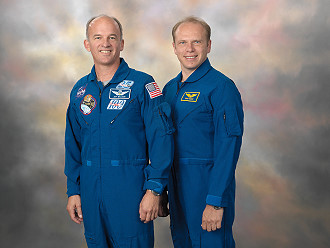 |
alternative crew photo |
alternative crew photo |
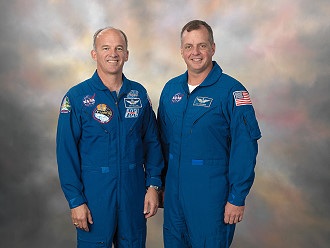 |
 |
![]()
Crew, launch- and landing data
| No. | Nation | Surname | Given names | Position | Spacecraft (launch) |
Launch date |
Launch time |
Spacecraft (landing) |
Landing date |
Landing time |
Mission duration |
Orbits |
| 1 | Williams | Jeffrey Nels | ISS-CDR | Soyuz TMA-16 | 30.09.2009 | 07:14:44.923 UTC | Soyuz TMA-16 | 18.03.2010 | 11:24:03.5 UTC | 169d 04h 09m 19s | 2669 | |
| 2 | Surayev | Maksim Viktorovich | Flight Engineer-1 | Soyuz TMA-16 | 30.09.2009 | 07:14:44.923 UTC | Soyuz TMA-16 | 18.03.2010 | 11:24:03.5 UTC | 169d 04h 09m 19s | 2669 | |
| 3 | Kotov | Oleg Valeriyevich | Flight Engineer-4 | Soyuz TMA-17 | 20.12.2009 | 21:52:00.061 UTC | Soyuz TMA-17 | 02.06.2010 | 03:24:32.2 UTC | 163d 05h 32m 32s | 2574 | |
| 4 | Noguchi | Soichi | Flight Engineer-5 | Soyuz TMA-17 | 20.12.2009 | 21:52:00.061 UTC | Soyuz TMA-17 | 02.06.2010 | 03:24:32.2 UTC | 163d 05h 32m 32s | 2574 | |
| 5 | Creamer | Timothy John "TJ" | Flight Engineer-6 | Soyuz TMA-17 | 20.12.2009 | 21:52:00.061 UTC | Soyuz TMA-17 | 02.06.2010 | 03:24:32.2 UTC | 163d 05h 32m 32s | 2574 |
unofficial Backup Crew
| No. | Nation | Surname | Given names | Position |
| 1 | Walker | Shannon | ISS-CDR | |
| 2 | Skvortsov | Aleksandr Aleksandrovich Jr. | Flight Engineer | |
| 3 | Shkaplerov | Anton Nikolayevich | Flight Engineer | |
| 4 | Furukawa | Satoshi | Flight Engineer | |
| 5 | Wheelock | Douglas Harry | Flight Engineer |
 |
|
Source: Roscosmos PAO |
 |
Expedition Report
|
Launch from the Baikonur Cosmodrome (Oleg
Kotov,
Soichi
Noguchi and Timothy
Creamer with
Soyuz
TMA-17). Jeffrey
Williams and Maksim
Surayev were onboard since October 02, 2009 (arrival with
Soyuz
TMA-16). ISS Expedition 22 began with the undocking of spacecraft Soyuz TMA-15 on December 01, 2009 at 03:55:59 UTC. The former Expedition 21 (Frank De Winne, Roman Romanenko and Robert Thirsk) returned safely to Earth. With the arrival of Soyuz TMA-17 on December 22, 2009 at 22:48 UTC the Expedition 22 became a five-person-crew. Soyuz TMA-17 carried Oleg Kotov, Soichi Noguchi and Timothy Creamer to the space station. The only EVA in this expedition by Maksim Surayev and Oleg Kotov occurred on January 14, 2010 (5h 44m) to prepare the Mini-Research Module 2, known as Poisk, for future Russian vehicle dockings. Maksim Surayev and Oleg Kotov performed work on MRM2, which docked to Zvezda in November 2009. Their work was similar to the work that Michael Barratt and Gennadi Padalka did on Zvezda in preparation for the arrival of MRM2 (Poisk). The cosmonauts installed Kurs navigation antennas, cables, and a docking target on the new module. They also installed handrails to assist in EVA work. After finishing their work on MRM2, Maksim Surayev and Oleg Kotov retrieved the Biorisk experiment canister from outside the Station and brought it inside, concluding their spacewalk. On January 21, 2010 Maksim Surayev and space station Commander Jeffrey Williams climbed into the Soyuz spacecraft on the aft end of the Zvezda service module, undocked and relocated the capsule to the Poisk docking port on top side of the complex. Astronauts took again control of the robot arm January 23, 2010 to move a U.S. docking part called Pressurized Mating Adapter No. 3 from the port side of the Unity module to the space-facing berthing location on Node 2, or the Harmony module. That operation was needed clear room for the Tranquility module, or Node 3, to be attached to the port side of Unity. Progress M-04M was launched at 03:45 UTC on February 03, 2010, and after just over three days of free flight, Progress M-04M docked with the Zvezda module of the International Space Station at 04:26 UTC on February 05, 2010. Its docking marked the first time four Russian spacecraft had been docked to the station at the same time; since the Soyuz TMA-16, Soyuz TMA-17 and Progress M-03M spacecraft were already docked. It was expected to remain docked until May 10, 2010, when it departed, allowing Soyuz TMA-17 to be moved to the Zvezda aft port. This in turn cleared the way for the arrival of the Rassvet module, which will be delivered by Space Shuttle Atlantis on STS-132. The Progress M-04M spacecraft delivered 2,686 kilograms (5,922 lb) of cargo to the ISS. This included water to be used by systems in the Russian segment of the station, propellant to refuel the station and to perform orbital maneuvers, food and medical supplies. Progress M-04M undocked from the ISS on May 10, 2010. On May 07, 2010 Russian Space Agency's Mission Control announced that the ISS crew had loaded Progress M-04M with garbage and readied the spacecraft for undocking. The command for undocking was issued at 11:13 UTC and three minutes later Progress M-04 M separated from the Zvezda module. Cosmonauts Aleksandr Skvortsov and Mikhail Korniyenko monitored the undocking with photo and video cameras focusing on the Progress docking mechanism to confirm that there were no missing or damaged O-ring seals on the docking interface. The spacecraft stayed in an autonomous flight for two months after undocking and take part in the Reflection geophysical experiment to study reflective characteristics of the freighter's hull and the transparency of the Earth's atmosphere. Progress M-04M was deorbited on July 01, 2010 over the Pacific Ocean. The deorbit burn began at 13:54 UTC. At about 14:40 UTC, remaining parts of the spacecraft which had not burnt during the reentry, fell down in the south area of the Pacific Ocean, 37°47' S 235°09' W. Space Shuttle STS-130 docked with the International Space Station on February 10, 2010. Space Shuttle Endeavour's (ISS-20A Tranquility - formerly: NODE 3, Cupola) primary payloads were the Tranquility module and the Cupola. The major tasks for the mission are to install, activate and checkout Tranquility, including connecting internal and external avionics, cables, and ammonia cooling system jumpers; relocating the Cupola from the end port of Tranquility to its Earth-facing port and then activating and checking out the Cupola; relocating the Pressurized Mating Adapter 3 (PMA 3) from the top of the Harmony node to the port side of Tranquility; and transferring water, equipment and experiments to the station. The European-built Node 3 is the final one of the three International Space Station nodes, which will be launched into orbit. The nodes are the interconnecting elements between the various pressurized modules on the space station. They provide a shirtsleeve environment to allow the passage of crew members and equipment through to other station elements and provide vital functions and resources for the crew members and equipment. Node 3 has systems, which provide many different functions and resources to the attached modules, and to itself, for maintaining a safe and ideal working and living environment on board the space station. Today's Node 3 is significantly different from the Node 3 that Europe initially agreed to develop back in 1997. It has evolved over the years from a connecting module into a very complex element, able to accommodate sophisticated crew and life support equipment, with many more capabilities than originally foreseen. Node 3 will support a six-member Expedition crew on the station by accommodating relevant hardware as well as supporting Node 3 cabin crew operations. Node 3 consists of a pressurized cylindrical hull 4.5 meters (4.9 yards) in diameter with a shallow conical section enclosing each end. It is almost 7 meters (7.65 yards) long and will weigh together with the Cupola more than 13.5 tons at launch. The pressurized shell of Node 3 is constructed from aluminium alloys. This is covered with a multi-layer insulation blanket for thermal stability and around 75 sections of panelling to act as a protective shield against bombardment from space debris. This panelling is also constructed of an aluminium alloy, together with a layer of Kevlar and Nextel. Internal and external secondary structures are used to support the installation of equipment, piping and electrical harnesses. Two water loops (respectively low-temperature and moderate-temperature loops) allow the rejection of the heat generated inside the element to the station ammonia lines by means of two heat exchangers mounted on the external side of one end cone. Node 3 can be considered in two halves. One half has a single docking port on one of the end cones where Node 3 will be docked to the station. This half also accommodates eight standard-sized racks, which will house relevant systems and equipment. The other half consists of an additional five docking ports, one on the other end cone and four arranged around the circumference of the cylindrical main body of Node 3. Originally, the Habitation module, the Crew Return Vehicle and Pressurized Mating Adaptor 3 (PMA-3) were to be attached to Node 3 along with the Cupola. However, the first two elements were removed from the station configuration and PMA-3 will be moved to the port-side docking port of Node 3 once it is installed. In its launch configuration in the shuttle's cargo bay, Node 3 will have the Cupola attached to the end cone that will eventually face out from the station and be connected to PMA. Inside Node 3, the eight rack locations will be taken up with two avionics racks, three racks containing pallets with equipment and cargo for the station, with the three remaining racks remaining empty. In its final in-orbit configuration Node 3 will look slightly different. The Cupola will be relocated to the Earth-facing port of Node 3 during the STS-130 mission. The three cargo pallet racks will be removed and returned on shuttle flight STS-131 in March 2010. In place of these three rack locations and the three empty rack locations will come six new racks which are already on the station. These include the second Air Revitalization System rack for air composition monitoring including carbon dioxide removal; an Oxygen Generation System rack for producing oxygen from water; Water Recovery System Racks 1 and 2 for urine and water processing; a Waste and Hygiene Compartment Rack for crew waste and hygiene processing and a second treadmill. Node 3 also will be outfitted with the Advanced Resistive Exercise Device for crew in-orbit physical exercise. All these racks and equipment are necessary since the station crew number was increased from three to six in the spring of 2009. The Cupola will become a panoramic control tower for the International Space Station, a dome-shaped module with windows through which operations on the outside of the station can be observed and guided. It is a pressurized observation and work area that will accommodate command and control workstations and other hardware. Through the robotics workstation, astronauts will be able to control the space station's robotic arm, which helps with the attachment and assembly of the various station elements, very much like the operator of a building crane perched in a control cabin. At any time, crew members in the Cupola can communicate with other crew members, either in another part of the station or outside during spacewalk activities. Spacewalking activities can be observed from the Cupola along with visiting spacecraft and external areas of the station with the Cupola offering a viewing spectrum of 360 degrees. Thus, the Cupola will have an important role in external space station activities. However, the Cupola will operate as more than a workstation. With a clear view of Earth and celestial bodies, the Cupola will have scientific applications in the areas of Earth observation and space science as well as holding psychological benefits for the crew. The Cupola is a 1.6-ton aluminium structure about 2 meters (2.18 yards) in diameter and 1.5 meters (1.64 yards) high. Its dome is a single forged unit with no welding. This gives it superior structural characteristics, which helped shorten the production schedule and lower overall costs. The Cupola is a "shirtsleeve" module with six trapezoidal side windows and a circular top window of 80 cm (31.5 inches) in diameter, making it the largest window ever flown in space. Each window is built using very advanced technologies to defend the sensitive fused silica glass panes from years of exposure to solar radiation and debris impacts. The windows are protected by special external shutters, which can be opened by the crew inside the Cupola with the simple turn of a wrist. At the end of their tasks, the window shutters are closed to protect the glass from micrometeoroids and orbital debris and to prevent solar radiation from heating up the Cupola or to avoid losing heat to space. Each window has three subsections: an inner scratch pane to protect the pressure panes from accidental damage from inside the Cupola; two 25 mm-thick (.98-inch) pressure panes to help maintain the cabin pressure and environment (the outer pane is a back-up for the inner pane); and a debris pane on the outside to protect the pressure panes from space debris when the Cupola shutters are open. The 10-year in-orbit lifetime calls for user-friendly replacement of the windows while in orbit. The entire window or the individual scratch and debris panes can be replaced in space. To replace an entire window, an astronaut would first fit an external pressure cover over the window during a spacewalk. Internally, the Cupola must provide functions to support the presence of two astronauts operating the instruments. Cupola's internal layout is dominated by upper and lower handrails around the inside of its cabin supporting most of the equipment and by "close-out" panels, which cover the harness and water lines attached to the Cupola. These internal panels form a pressurized air distribution system with the outer structure. These panels are removable to allow inspection and connection of different utilities. Less than two hours after docking, hatches were opened between the two spacecraft and a combined crew of 11 began eight days of work. Endeavour's crew was working with Expedition 22 Commander NASA astronaut Jeffrey Williams and Flight Engineers cosmonaut Maksim Surayev, NASA astronaut Timothy Creamer and Japan Aerospace Exploration Agency astronaut Soichi Noguchi. Soichi Noguchi and Stephen Robinson flew together on the STS-114 space shuttle return-to-flight mission in 2005. After a station safety briefing, Nicholas Patrick and Timothy Creamer operated the station's robotic arm to remove the OBSS from Endeavour's payload bay and handed it off to the shuttle robotic arm being operated by Terry Virts and Kathryn Hire. The next day, Endeavour's crew began transferring supplies from the middeck to the station, including spacewalking equipment. While Nicholas Patrick and Robert Behnken were getting the tools ready, Commander George Zamka and ISS Flight Engineer Soichi Noguchi swapped out the Hard Upper Torso (HUT) on Robert Behnken's suit, since the original HUT had developed a problem with a wire harness and was not powering the Wireless Video System (WVS) or the heaters in his gloves and boots. Once the swap was complete, George Zamka and Soichi Noguchi tested the suit successfully. The crew also performed a number of transfer related activities during the morning of their work day. After a joint meal together, the crew of STS-130 and ISS Commander Jeffrey Williams and Flight Engineer Timothy Creamer conducted a PAO event with T.V. stations in Sacramento, California, Mobile, Alabama and a radio station in St. Louis, Missouri. The first EVA by Robert Behnken and Nicholas Patrick occurred on February 12, 2010 (6h 32m) to remove a cover that has been in place to protect a port on the Unity node, the location where Tranquility was attached robotically halfway through the spacewalk. Next, the spacewalkers removed and stored a spare parts platform from the Special Purpose Dexterous Manipulator, or Dextre, a two-armed space station robot capable of handling delicate assembly tasks currently performed by spacewalkers. Finally, they installed four electronics systems cables between Unity and Tranquility to bring the new node to life. The first order of business, once Robert Behnken and Nicholas Patrick began the first spacewalk of the mission, was the preparation of the new Tranquility node for installation on the Unity node. Robert Behnken began by moving to Unity and opening a flap that will expose Unity's centerline camera, which was used to line up the two nodes during installation. He then removed eight contamination covers from the port on Tranquility that was docked to Unity. While Robert Behnken was doing so, Nicholas Patrick began by installing an electric circuit on the avionics panel of Tranquility and removing cables that provide the node power from the shuttle before its installation. After a trip back to the airlock to retrieve insulation and jumpers to be stored for use in a later spacewalk, both Robert Behnken and Nicholas Patrick came together at the special purpose dexterous manipulator - or Dextre - to remove its orbital replacement unit temporary platform, a storage platform that allows the robot to carry spare parts. They retrieved two handles from storage and installed them on the robot and the platform, then worked together to release the four fasteners connecting the platform to the robot. Robert Behnken carried the platform to a stowage bin on the left side of the station's truss, where it will be available for use as a backup to a new enhanced platform that was installed on Dextre during the STS-132 mission. While that work was going on, Terry Virts and Kathryn Hire had unloaded Tranquility from Endeavour's cargo bay and installed it on the Unity node, at which point Robert Behnken and Nicholas Patrick began hooking it up. Nicholas Patrick began by connecting Tranquility's heater cables to Unity to provide a temporary power supply. Robert Behnken, meanwhile, connected eight avionics cables between the nodes. From inside the station, Terry Virts and Kathryn Hire used the station's robotic arm to remove Tranquility from the shuttle's payload bay, then carefully maneuvered and installed the node onto the port side of the Unity node. Tranquility was built for NASA by Thales Alenia Space in Turin, Italy, under contract to the European Space Agency. On flight day 6 members of the joint crew opened the hatches to the new Tranquility module for the first time. STS-130 crew-members George Zamka, Terry Virts, Stephen Robinson and Kathryn Hire all helped in the initial outfitting of the node. During the initial outfitting, Terry Virts and Kathryn Hire prepared the Cupola for its move from the end of Node 3. While that was going on spacewalkers Robert Behnken and Nicholas Patrick re-sized and repaired Robert Behnken's original suit for use by Nicholas Patrick, after a small problem with a fan was discovered. Once that task was complete the pair began getting their tools ready for the second of three spacewalks. The second EVA was again performed by Robert Behnken and Nicholas Patrick on February 14, 2010 (5h 54m) to install ammonia plumbing connectors between Unity and Tranquility and covering them with thermal insulation. When turned on, the ammonia will provide cooling to Tranquility. Then they prepared a port on the Earth facing side of Tranquility for the flight day 8 relocation and attachment of the Cupola. Robert Behnken and Nicholas Patrick spent the first four hours of their second spacewalk connecting the ammonia loops on the new Tranquility node to those of the Destiny laboratory. There are two loops, with two lines apiece, each of which had to connect to both Tranquility and Destiny and routed through a bracket on Unity, which connects Tranquility to Destiny. Robert Behnken opened one of the loops so that ammonia was allowed to flow to the node from the station's external thermal control system. Once that task was complete, the spacewalkers spent the remaining time outfitting Tranquility. Robert Behnken installed insulation on the keel pin and four trunnions that connected Tranquility to the shuttle while it was in transit. He also set up the centerline camera on the nadir, or Earth-facing, port of Tranquility and released the launch locks that held the petals of the port's berthing mechanism in place during launch. The Cupola was moved to that port the following day. While Robert Behnken worked on that, Nicholas Patrick installed eight handrails and a vent valve on Tranquility. The handrails will be used by spacewalkers to move along the exterior of the node, and the vent valve will be part of the atmospheric control and resupply system. That was Nicholas Patrick's final task of the spacewalk. Robert Behnken wrapped up his duties by removing tape on five gap spanners that act as a bridge for astronauts between areas on Tranquility without handrails. On flight day 8, the Cupola was successfully moved from its launch location to its permanent location on the earth facing side of Tranquility. Cupola was moved by the space station robot arm (SSRMS), which was operated by Kathryn Hire and Terry Virts. ISS Commander Jeffrey Williams assisted them by releasing the bolts and hooks that held the Cupola in place and then securing it to its new home. The process was slightly delayed due to some bolts that were torqued tighter than expected on the ground, but flight controllers were able to increase the torque to release the bolts. Once the move of the Cupola was complete, outfitting continued to get the Cupola ready. The crew was able to ingress it the next day, but the window covers were not be opened until after the third and final spacewalk. While the Cupola relocation was going on, some of the crew members participated in transferring items between the shuttle and station. Also, during this time Robert Behnken and Nicholas Patrick prepared the tools that they used during the final spacewalk scheduled for flight day 10. During this time the pair re-sized another spacesuit on station for use by Robert Behnken. This was done because the suit Robert Behnken had been using had some problems with its communications equipment. On February 16, 2010 Nicholas Patrick and Robert Behnken, together with Expedition 22 crew members Jeffrey Williams and Soichi Noguchi, maneuvered the Pressurized Mating Adapter 3 from its location on the Harmony module to the open port on the end of Tranquility. The PMA will provide protection from micro-meteoroid debris. PMA 3 was moved by Robert Behnken and Nicholas Patrick, with help from Jeffrey Williams and Soichi Noguchi to release the PMA 3. During the PMA 3 relocation, Kathryn Hire and Terry Virts continued work on outfitting the Cupola. The joint Expedition 22/STS-130 crews enjoyed a meal together and had some off-duty time in the 2nd half of their day. Before the scheduled bedtime the entire crew conducted another EVA procedures review for the third and final EVA of the mission. The third and final EVA by Robert Behnken and Nicholas Patrick occurred on February 17, 2010 (5h 48m) to turn on the ammonia cooling lines between Unity and Tranquility, installing heater and data cables on Tranquility, removing insulation and launching locks from the newly-installed Cupola, and installed handrails on the outside of Tranquility. Tranquility outfitting continued on the third and final spacewalk of the mission. Robert Behnken opened the second of the two ammonia loops he and Nicholas Patrick routed during the previous spacewalk, and disconnected the temporary power cables Nicholas Patrick set up during the first spacewalk. By this time in the mission, the Cupola was moved to its permanent home on Tranquility's nadir docking port, and the pressurized mating adapter 3 had taken its place on the end of the node. That left Nicholas Patrick and Robert Behnken free to begin getting them into the right configuration. Nicholas Patrick connected the mating adapter's heater and data cables to Tranquility. Then he worked with Robert Behnken to remove six panels of insulation over the Cupola's windows. With the insulation out of the way, Nicholas Patrick was able release the three bolts on each of the seven window's covers; those bolts held the covers in place during Endeavour's launch. While he did so, Robert Behnken got back to outfitting Tranquility by installing four worksite interfaces and five more handrails. At this point the two spacewalkers came back together to route cables for the station's video signal converter, or VSC. The VSC is used with power and data grapple fixtures, of PDGFs, which provide locations on the exterior of the station's modules for the station's robotic arm to attach to. Robert Behnken and Nicholas Patrick wrapped up the last of the spacewalk activities for the mission with two final tasks. First, they closed off the centerline camera that was used on the zenith, or space-facing, port of the Harmony node when the pressurized mating adapter 3 was attached it. And finally, they each removed six clamps and the flex hose rotary coupler on the port 1 segment of the station's truss. Once the launch locks were removed, pilot Terry Virts opened the windows on Cupola for the first time. During the day Kathryn Hire and Terry Virts hooked up and transferred the Cupola robotics station for its use in the future. Terry Virts also completed some transfer tasks in the morning. On flight day 11, the joint Expedition 22/STS-130 crew began transferring Environmental control and life support system (ECLSS) racks to the Tranquility module. These transfers were done by ISS commander Jeffrey Williams, Flight Engineer Timothy Creamer, shuttle commander George Zamka and mission specialist Stephen Robinson and took most of the day. Also, during the day pilot Terry Virts continued working on getting the Cupola set-up for the robotics work station. He had a small problem installing some corner panels which are needed to hold the workstation. Spacewalkers Robert Behnken and Nicholas Patrick were busy reconfiguring the airlock for use by the station crew and later flights. They also transferred their spacesuits and tools back to the shuttle for the return trip home. After the rack transfers were done the crew completed some more transfers and passed the 75% complete mark. The space shuttle commanded by commander George Zamka and pilot Terry Virts completed a reboost of the station using its vernier thrusters. The remaining days the crew finished packing, reconfigure spacesuits and transfer them to Endeavour, and check out the rendezvous tools that were used for undocking, flyaround and separation. The Endeavour crew said farewell to the five-member station crew and closed the hatches between the two spacecraft. On February 20, 2010 STS-130 undocked from the ISS and moved to a distance of about 450 feet (137.2 meters), where Terry Virts began to fly around the station. Terry Virts circled the shuttle around the station at a distance of 600 - 700 feet (182 - 213 meters). Once the shuttle completed 1.5 revolutions of the complex, Terry Virts fired Endeavour's jets to leave the area. The shuttle began to increase its distance from the station with each trip around the earth while ground teams analyzed data from the late inspection of the shuttle's heat shield. However, the distance was close enough to allow the shuttle to return to the station in the unlikely event that the heat shield is damaged, preventing the shuttle's safe re-entry. The Expeditions 21 / 22 mission marked start of the transition from assembling the International Space Station to using it for continuous scientific research in the fall of 2010. The Agricultural Camera (AgCam) will take frequent images, in visible and infrared light, of vegetated areas on the Earth, principally of growing crops, rangeland, grasslands, forests, and wetlands in the northern Great Plains and Rocky Mountain regions of the United States. Images will be delivered within 2 days directly to requesting farmers, ranchers, foresters, natural resource managers and tribal officials to help improve their environmental stewardship of the land. Images will also be shared with educators for classroom use. The Amateur Radio on the International Space Station (ARISS) uses ham radio equipment onboard the International Space Station (ISS) to connect crewmembers to groups that include general public, teachers, students, and parents. The goal of ARISS is to get students interested in mathematics and science by allowing them to talk directly with the crews living and working aboard the ISS. Ambiguous Tilt and Translation Motion Cues After Space Flight (Zag) will investigate the exposure to combined tilt and translation motion profiles. It will also examine the effects of stimulus frequency (0.15 - 0.6Hz) on adaptive changes in eye movements and motion perception, and evaluate how a tactile prosthesis can be used to improve control performance. Aquarium: Study of stability of model closed ecological system and its parts under microgravity conditions, both as microsystem components and as perspective biological systems of space crew's life support. ARIL: Effect produced by SFFs on expression of strains producing interleukins 1alpha, 1beta, "ARIL". Assessment of Endurance Capacity by Gas Exchange and Heart Rate Kinetics during Physical Training (EKE) targets the development of a diagnostic tool for the assessment of endurance capacity from respiratory and cardiovascular kinetics in response to changes in exercise intensity. It will also provide data for the development of a physiological model to explore the delay and distortion of muscle VO2 signals during their travel to the lungs. Astrovaktsina: Cultivation of E.Coli-protein Caf1 producer in zero-g. AIS/GATOR (Automatic Identification System/Grappling Adaptor to On-Orbit Railing) aims to demonstrate the space-based capability of identification of maritime vessels using the Automatic Identification System (AIS). The Grappling Adaptor to On-Orbit Railing (GATOR) demonstrates the on-orbit capability of simple hardware designed to attached small passive equipment/payloads externally to the ISS Extravehicular handrails. Bakteriofag: Study of effect produced by space flight factors on bacteriophage. Bar: Testing of principles and methods for the Space Station leak area control, selection of the sensor design and configuration. BIF: Study of effect produced by space flight factors on technological and biomedical characteristics of bifid bacteria. BIMS (Onboard Information Medical System): Study of flight medical information support using onboard information medical system. Binary Colloidal Alloy Test - 3 (BCAT-3) will allow crews to photograph samples of colloidal particles (tiny nanoscale spheres suspended in liquid) to document liquid/gas phase changes, and the formation of colloidal crystals confined to a surface. Results will help scientists develop fundamental physics concepts previously hindered by the effects of gravity. Data may lead to improvements in supercritical fluids used in rocket propellants and biotechnology applications, and advancements in fiber-optics technology. Binary Colloidal Alloy Test - 4 (BCAT-4) is a follow-on experiment to BCAT-3. BCAT-4 will study ten colloidal samples. Seven of these samples will determine phase separation rates and add needed points to the phase diagram of a model critical fluid system initially studied in BCAT-3. Three of these samples will use model hardspheres to explore colloidal crystal formation, providing insight into how nature brings order out of disorder. The Binary Colloidal Alloy Test - 5 (BCAT-5) is a suite of four investigations that will photograph randomized colloidal samples onboard the International Space Station (ISS) to determine their resulting structure over time. The use of EarthKAM software and hardware will allow the scientists to capture the kinetics (evolution) of their samples, as well as the final equilibrium state of each sample. Biodegradatsiya: Assessment of the initial stages of biodegradation and biodeterioration of the surfaces of structural materials. Bioemulsiya: Study and improvement of closed-type autonomous reactor for obtaining biomass of microorganisms and bioactive substance without additional ingredients input and metabolism products removal. Hair will study the effects of long- term exposure to the space environment on gene expression space flight and mineral metabolism in human hair. Human hair is one of the most suitable biological specimens for a space experiment since there are no special requirements for handling or for use of hardware. Hair matrix cells actively divide in a hair follicle while these cell divisions sensitively reflect physical conditions. The hair shaft records the information of the astronauts' metabolic conditions. These samples give us useful physiological information to examine the effects of spaceflight on astronauts participating in long-duration spaceflight missions. In the experiment, two different analyses will be performed using the ISS crew members' hair: 1) Nucleic Acids (RNA and mitochondrial DNA) and proteins in the hair root and 2) Minerals in the hair shaft. Biorisk: Study of space flight impact on microorganisms-substrates systems state related to space technique ecological safety and planetary quarantine problem. Biotrack: Study of space radiation heavy charged particles fluxes influence on genetic properties of bioactive substances cells-producers. Bisphosphonates as a Countermeasure to Space Flight Induced Bone Loss (Bisphosphonates) will determine whether antiresorptive agents (help reduce bone loss), in conjunction with the routine inflight exercise program, will protect ISS crewmembers from the regional decreases in bone mineral density documented on previous ISS missions. Bodies in the Space Environment (BISE) will evaluate adaptation to, the effect of, and recovery from long-duration microgravity exposure on the perception of orientation using the OCHART protocol. Capillary Flow Experiment - 2 (CFE-2) is a versatile experiment to study characteristics of low-g capillary flows. CFE-2 is designed to probe capillary phenomena of fundamental and applied importance, such as: capillary flow in complex containers, critical, critical wetting in discontinuous structures and surfaces, and passive gas-liquid phase separators. Cardiac Atrophy and Diastolic Dysfunction During and After Long Duration Spaceflight: Functional Consequences for Orthostatic Intolerance, Exercise Capability and Risk for Cardiac Arrhythmias (Integrated Cardiovascular) will quantify the extent, time course and clinical significance of cardiac atrophy (decrease in the size of the heart muscle) associated with long-duration space flight. This experiment will also identify the mechanisms of this atrophy and the functional consequences for crewmembers who will spend extended periods of time in space. Cardiovascular and Cerebrovascular Control on Return from ISS (CCISS) will study the effects of long-duration space flight on crewmembers' heart functions and their blood vessels that supply the brain. Learning more about the cardiovascular and cerebrovascular systems could lead to specific countermeasures that might better protect future space travelers. This experiment is collaborative effort with the Canadian Space Agency. Cascad: Study of various types cells cultivation processes. Commercial Generic Bioprocessing Apparatus Science Insert - 03 (CSI-03) is the third set of investigations in the CSI program series. The CSI program provides the K-12 community opportunities to utilize the unique microgravity environment of the International Space Station as part of the regular classroom to encourage learning and interest in science, technology, engineering and math. CSI-03 will examine the complete life cycle of the painted lady butterfly and the ability of an orb weaving spider to spin a web, eat and remain healthy in space. A Comprehensive Characterization of Microorganisms and Allergens in Spacecraft (SWAB) will use advanced molecular techniques to comprehensively evaluate microbes on board the space station, including pathogens (organisms that may cause disease). It also will track changes in the microbial community as spacecraft visit the station and new station modules are added. This study will allow an assessment of the risk of microbes to the crew and the spacecraft. Constant: Study of the influence factor space flight on activity ferment. Constrained Vapor Bubble (CVB) consists of a remotely controlled microscope and a small, wickless heat pipe or heat exchanger operating on an evaporation/condensation cycle. The objective is to better understand the physics of evaporation and condensation as they affect heat transfer processes in a heat exchanger designed for cooling critical, high heat output, components in microgravity. Contur: Development of the methods of management through Internet robot-manipulator on ISS. Crew Earth Observations (CEO) takes advantage of the crew in space to observe and photograph natural and human-made changes on Earth. The photographs record the Earth's surface changes over time, along with dynamic events such as storms, floods, fires and volcanic eruptions. These images provide researchers on Earth with key data to better understand the planet. The Delay Tolerant Networking (DTN) will test communication protocols with the Commercial Generic Bioprocessing Apparatus (CGBA) onboard the International Space Station that can be used for exploration. The primary purpose of this activity is to rapidly mature the DTN technology for use in NASA's exploration missions and space communications architecture. DEvice for the study of Critical LIquids and Crystallization (DECLIC) is a multi-user facility consisting of three investigations, DECLIC - Alice Like Insert (DECLIC-ALI), DECLIC - High Temperature Insert (DECLIC-HTI) and DECLIC - Directional Solidification Insert (DECLIC-DSI) to study transparent media and their phase transitions in microgravity on board the International Space Station (ISS). The Dietary Intake Can Predict and Protect Against Changes in Bone Metabolism during Spaceflight and Recovery investigation (Pro K) is NASA's first evaluation of a dietary countermeasure to lessen bone loss of astronauts. Studies to date have not proven any countermeasures against bone loss to be effective during flight. Pro K investigators propose that a flight diet with a decreased ratio of animal protein to potassium will lead to decreased loss of bone mineral. This investigation will allow researchers to see how diet affects loss of bone mass and recovery of bone after landing. Pro K will have an impact on the definition of nutritional requirements and development of food systems for future exploration missions to the Moon and Mars, and could yield a method of counteracting bone loss that would have virtually no risk of side effects and require no additional launch mass or crew time. The Dose Distribution Inside ISS - Dosimetry for Biological Experiments in Space (DOSIS-DOBIES) consist of two investigations. The DOSIS portion of the experiment will provide documentation of the actual nature and distribution of the radiation field inside the spacecraft. Integral measurements of energy, charge and LET spectra of the heavy ion component will be done by the use of different nuclear track detectors. The objective of DOBIES is to develop a standard dosimetric method (as a combination of different techniques) to measure the absorbed doses and equivalent doses in biological samples. Dykhanie: Study of respiration regulation and biomechanics under space flight conditions. Early Detection of Osteoporosis in Space (EDOS) will test the ability of XtremeCT technology (developed by SCANCO Medical) to detect bone architecture changes and provide a better evaluation of the kinetics of bone loss recovery postflight. Earth Knowledge Acquired by Middle School Students (EarthKAM), an education activity, allows middle school students to program a digital camera on board the International Space Station to photograph a variety of geographical targets for study in the classroom. Photos are made available on the world wide web for viewing and study by participating schools around the world. Educators use the images for projects involving Earth Science, geography, physics, and social science. Education Payload Operation - Demonstrations (EPO-Demos) are recorded video education demonstrations performed on the International Space Station (ISS) by crewmembers using hardware already onboard the ISS. EPODemos are videotaped, edited, and used to enhance existing NASA education resources and programs for educators and students in grades K-12. EPO-Demos are designed to support the NASA mission to inspire the next generation of explorers. Effect of Gravitational Context on EEG Dynamics: A Study of Spatial Cognition, Novelty Processing and Sensorimotor Integration (Neurospat) consists of two investigational protocols. One protocol will test prefrontal brain functions and spatial cognition and the other will determine the effect of gravitational context on brain processing. Erasmus Recording Binocular-2 (ERB-2) is a three-dimensional (3-D) video camera that is used to take images of the environment onboard the International Space Station (ISS). These images are used to create an accurate three-dimensional map of the interior of ISS. Evaluation of Maximal Oxygen Uptake and Submaximal Estimates of VO2max Before, During, and After Long Duration International Space Station Missions (VO2max) will document changes in maximum oxygen uptake for crewmembers onboard the International Space Station (ISS) on long-duration missions, greater than 90 days. This investigation will establish the characteristics of VO2max during flight and assess the validity of the current methods of tracking aerobic capacity change during and following the ISS missions. Foam Casting and Utilization in Space (FOCUS) will provide nanoparticle stabilized foam generation and bubble nucleation and development in microgravity. Functional Task Test: Physiological Factors Contributing to Changes in Postflight Functional Performance (FTT) tests astronauts on an integrated suite of functional and physiological tests before and after short and long-duration space flight. The study will identify critical mission tasks that may be impacted, map physiological changes to alterations in physical performance and aid in the design of countermeasures that specifically target the physiological systems responsible for impaired functional performance. Health Consequences of Long-Duration Flight (Vascular) will provide an integrated approach to gain knowledge concerning the mechanisms responsible for changes that will occur in vascular structure with long-duration space flight and to link this with their functional and health consequences. HICO and RAIDS Experiment Payload - Hyperspectral Imager for the Coastal Ocean (HREP-HICO) will operate a visible and nearinfrared (VNIR) Maritime Hyperspectral Imaging (MHSI) system, to detect, identify and quantify coastal geophysical features from the International Space Station. The HICO and RAIDS Experiment Payload - Remote Atmospheric and Ionospheric Detection System (HREP-RAIDS) experiment will provide atmospheric scientists with a complete description of the major constituents of the thermosphere (layer of the Earth's atmosphere) and ionosphere (uppermost layer of the Earth's atmosphere), global electron density profiles at altitudes between 100 - 350 kilometers. JAXA PCG seeks to grow crystals of biological macromolecules by the counter diffusion technique. The main scientific objective of the JAXA PCG experiment is to produce fine-quality protein crystals in microgravity. The crystals will be grown in the JAXA PCG Canister using the Protein Crystallization Research Facility (PCRF) in the RYUTAI rack. The space-grown crystals will be applied to structural biology and pharmaceutical activities. This experiment is a JAXA-ROSCOSMOS science collaboration. JAXA is performing the onboard experiments, including samples from the Russian research group, and ROSCOSMOS is operating the launch and retrieval. Identifikatsiya: Identification of disturbance sources when the microgravity conditions on the ISS are disrupted. Impulse: Ionospheric sounding by pulsed plasma sources. Rad Silk will examine the effects of space radiation and microgravity on silkworm eggs. The silkworm egg is assumed to have a highly sensitive stage during radiation exposure after diapause, since white spots are observed on silkworm caterpillars when exposed to radiation during their egg stages. The eggs will be placed in egg cases. After the launch, at 4°C (39.2°F), the eggs in the egg cases will be kept cool in the MELFI at 2°C (35.6°F) for diapause. Before returning to the ground, the eggs will be incubated at 20°C (68°F) for 6 days using the CBEF, then stored in the MELFI at 2°C (35.6°F). Some eggs will be frozen at -95°C (-139°F). As the control sample, one egg case will remain at 2°C (35.6°F) without incubation. On the ground, the returned eggs will be germinated, and the effects of radiation will be analyzed with a mutation assay, a genetic assay, and biochemical assays. Investigating the Structure of Paramagnetic Aggregates from Colloidal Emulsions - 3 (InSPACE-3) will study the particle dynamics of magnetorheological fluids (fluids that change properties in response to magnetic fields) that can be used to improve or develop new brake systems and robotics. Izgib: Study of the relationship between the onboard systems operating modes and ISS flight conditions. Dewey's Forest is intended to show how gravity controls the law of nature and influences our way of thinking. After cultivating four Plant Units (Seiryu, Byakko, Suzaku, and Genbu) for 2 months, crew members create a garden and talk about it while taking video. This is a catalyst to rediscover the relationship between plants and humankind, and the history of gardening and nature. Kon'yugatsiya: Working through the process of genetic material transmission using bacteria conjugation method. Kristallizator: Biological macromolecules crystallization and obtaining biocrystal films under microgravity conditions. Laktolen: Effect produced by space flight factors on Laktolen producing strain. Space Seed will investigate the role of gravity in regulating the developmental processes of higher plants, using Arabidopsis thaliana, also known as Arabidopsis or thale cress. The seeds will be planted in the plant experiment sample chambers in the Plant Experiment Unit (PEU) before launch. On orbit, the plants in the eight PEUs will be incubated in the Cell Biology Experiment Facility (CBEF) in the SAIBO rack and will be observed using the PEU CCD camera. After about 30 days of incubation, half of the germinated samples (stems, leaves, and roots) will be harvested, fixed, and stored in the Minus Eighty-degree Laboratory Freezer for the ISS (MELFI) at 2°C (35.6°F) and -95°C (-139°F). A quarter of the other half will be harvested after an additional 30 days of incubation, then fixed and refrigerated in the MELFI. The rest of the samples, including seeds produced in microgravity, will also be refrigerated. All stored samples will be returned to the ground to be analyzed morphologically and genetically. Matryeshka-R: Study of radiation environment dynamics along the ISS RS flight path and in ISS compartments, and dose accumulation in anthropomorphous phantom, located inside and outside ISS. The purpose of the Mental Representation of Spatial Cues During Space Flight (3D-Space) experiment is to investigate the effects of exposure to microgravity on the mental representation of spatial cues by astronauts during and after space flight. The absence of the gravitational frame of reference during spaceflight could be responsible for disturbances in the mental representation of spatial cues, such as the perception of horizontal and vertical lines, the perception of objects' depth, and the perception of targets' distance. Mice Drawer System (MDS) is an Italian Space Agency investigation that will use a validated mouse model to investigate the genetic mechanisms underlying bone mass loss in microgravity. Research conducted with the MDS is an analog to the human research program, which has the objective to extend the human presence safely beyond low Earth orbit. MAXI is an external observatory operated on the JEM EF. MAXI was launched and installed on Kibo's EF during the STS-127 Mission. MAXI has been and will be monitoring X-ray variability for more than 1,000 X-ray sources covering the entire sky. MAXI consists of two types of highly sensitive X-ray slit cameras, the Gas Slit Camera (GSC) and the Solid-state Slit Camera (SSC). The GSC uses a gas proportional counter for X-ray detection, and the SSC uses Peltier-cooled CCDs for X-ray detection. MAXI is equipped with 12 GSCs and 2 SSCs. The discoveries of X-ray novae and gamma-ray bursts with MAXI are to be distributed worldwide via the Internet, so that astronomical observatories may conduct follow-up and detailed observations with telescopes or astronomical satellites. Myco1 will investigate and evaluate the risk of inhalation and adhesion of microorganisms to astronauts who are exposed to ambient air on board the ISS during long-duration missions. The ultimate goal of this experiment is to develop medically effective countermeasures to protect ISS crew members living in a closed environment of microgravity against the living environmental risks caused by microorganisms. Normal human flora is thought to be strongly affected by the living environment. The environment on board the ISS would progressively be contaminated by microorganisms since various microorganisms are brought up to the station along with commodities and or crew members themselves. Some of them are possible allergens in our living environment. To mitigate the risk of microbial contamination on board, it is necessary to take some countermeasures against microbial contaminations. Otolith Assessment During Postflight Re-adaptation (Otolith) will assess otolith (small bones of the inner ear) function in crewmembers preflight and postflight. Area PADLES surveys the space radiation environment inside Kibo using the PADLES analysis system and passive and integrating dosimeter developed by JAXA for measuring absorbed dose, LET distributions, and dose equivalents. Ultimate goals of this program are to support risk assessment and dose management for Japanese astronauts, and to update radiation assessment models for human spaceflight in the next generation. There are 17 Area PADLES dosimeters installed in Kibo's Pressurized Module (JEM PM) and Kibo's Experiment Logistics Module-Pressurized Section (ELM-PS). They are replaced during each space station expedition. This series of experiments began from Expedition 17. Plazmida: Investigation of microgravity effect on the rate of transfer and mobilization of bacteria plasmids. Poligen: Detection of genotypic features (experimental object - Drozophila midge), determining individual characteristics of resistance to the long-duration flight factors. Ram Burn Observations - 2 (RAMBO-2) is an experiment in which the Department of Defense uses a satellite to observe space shuttle orbital maneuvering system engine burns. Its purpose is to improve plume models, which predict the direction the plume, or rising column of exhaust, will move as the shuttle maneuvers on orbit. Understanding the direction in which the spacecraft engine plume, or exhaust flows could be significant to the safe arrival and departure of spacecraft on current and future exploration missions. Relaksatsiya: Study of chemiluminescent chemical reactions and atmospheric light phenomena that occur during high-velocity interaction between the exhaust products from spacecraft propulsion systems and the Earth atmosphere at orbital altitudes and during the entry of space vehicles into the Earth upper atmosphere. Seyener: Experimental methodses of the interaction of the crews to cosmic station with court Fishing in process of searching for and mastering commercial-productive region of the World ocean. Sonokard: Integrated study of physiological functions during sleep period throughout a long space flight. The Analysis of a Novel Sensory Mechanism in Root Phototropism - II (Tropi-II) investigation will study the effects of various gravity levels on the responses of plants to light. The results of this experiment can lead to information to help in food production during future long-duration space exploration missions. Thermoregulation in Humans During Long-term Space Flight (Thermolab) aims to investigate the thermoregulatory and cardiovascular adaptations during rest and exercise in the course of a long-term microgravity exposure. It is hypothesized that heat balance, thermoregulation and circadian temperature rhythms are altered in humans during long-term space flights. Since all physiological change factors are particularly cross-linked with each other in view of thermoregulation, an integrative study of the topic under microgravity conditions is mandatory. Uragan: Experimental verification of the ground and space-based system for predicting natural and manmade disasters, mitigating the damage caused, and facilitating recovery. Finally, the station command changed from US astronaut Jeffrey Williams to Russian cosmonaut Oleg Kotov. With undocking of Soyuz TMA-16, carrying Jeffrey Williams and Maksim Surayev, on March 18, 2010 at 08:03:03 UTC the Expedition 22 concluded and the new ISS Expedition 23 began. During the stay on board of the ISS the crews of Expeditions 21 / 22 carried out the following scientific experiments: 3D-Space (Mental Representation of Spatial Cues During Space Flight), AgCam (Agricultural Camera - AgCam name used historically from 2005-2010, later version known as ISAAC), ALTEA-Dosi (Anomalous Long Term Effects in Astronauts' - Dosimetry), ARISS (Amateur Radio on the International Space Station), Aryl (Influencing Factors of Space Flight on Expression of Strains of Interleukin), Astrovakcina (Cultivation in Weightless of E.coli- Producer of the Caf1 Protein), Avatar Explore (Avatar Explore: Autonomous Robotic Operations Performed from the ISS), Bacteriophage (Investigation of the Effects of Space Flight Factors on Bacteriophages), Bar (Choice and Development of Methods and Instruments to Detect the Location of a Loss of Pressurization of a Module on ISS), BCAT-5-3D-Melt (Binary Colloidal Alloy Test - 5: Three-Dimensional Melt), BCAT-5-Compete (Binary Colloidal Alloy Test - 5: Compete), BCAT-5-PhaseSep (Binary Colloidal Alloy Test-5: Phase Separation), BCAT-5-Seeded_Growth (Binary Colloidal Alloy Test - 5: Seeded Growth), Bif (Investigation of the Effects of Space Flight Factors on the Technological and Biomedical Characteristics of Bifidobacterium), BIMS (Assessment of the Efficiency of the Use of Telemedicine Technologies On-Board ISS), Biodegradation (Initial stage of Biodegradation and Biodeterioration in Space), Bioemulsia (Research and Development of a Self-Contained Reactor of the Shielded Type For Production of Biomass of Microorganisms and Biologically Active Substances), Biological Rhythms (The Effect of Long-term Microgravity Exposure on Cardiac Autonomic Function by Analyzing 24-hours Electrocardiogram), Biorisk (Influence of Factors of the Space Environment on the Condition of the System of Microorganisms-Hosts Relating to the Problem of Environmental Safety of Flight Techniques and Planetary Quarantine), BISE (Bodies In the Space Environment: Relative Contributions of Internal and External Cues to Self - Orientation, During and After Zero Gravity Exposure), Bisphosphonates (Bisphosphonates as a Countermeasure to Space Flight Induced Bone Loss), BTN-M1 (Examination of the Flow of High Speed and Thermal Neutrons), Cambium (Cambium), Card (Long Term Microgravity: A Model for Investigating Mechanisms of Heart Disease with New Portable Equipment), CCISS (Cardiovascular and Cerebrovascular Control on Return from ISS), CEO (Crew Earth Observations), CERISE (RNA Interference and Protein Phosphorylation in Space Environment Using the Nematode Caenorhabditis elegans), Conjugation (Development of Methods for Designing New Recombinants Producing Strains of Bacteria in Space Flight), CSI-03 (Commercial Generic Bioprocessing Apparatus Science Insert - 03: Spiders and Butterflies), DECLIC-DSI (DEvice for the study of Critical LIquids and Crystallization - Directional Solidification Insert), DECLIC-HTI (DEvice for the study of Critical LIquids and Crystallization - High Temperature Insert), DOSIS-DOBIES (Dose Distribution Inside ISS - Dosimetry for Biological Experiments in Space), DTN (Disruption Tolerant Networking for Space Operations), Dykhanie (Regulation and Biomechanics of Respiration in Space Flight), EarthKAM (Earth Knowledge Acquired by Middle School Students), EDOS (Early Detection of Osteoporosis in Space), EKE (Assessment of Endurance Capacity by Gas Exchange and Heart Rate Kinetics During Physical Training), Ekon (Experimental Survey on Evaluating the Possibility of Using th Russian Segment of ISS for Environmental Inspection of Work Areas of Various Facilities (Features)), Environmental Monitoring (Environmental Monitoring of the International Space Station), EPO-Demos (Education Payload Operation - Demonstrations), Expert (Investigation of Early Symptoms of Microdestruction of Structures and Instrument Modules in the Russian Segment of ISS), FLEX-2 (Flame Extinguishment Experiment - 2), Foam-Stability (Foam Optics And Mechanics - Stability), FOCUS (Foam Casting and Utilization in Space), Functional Task Test (Physiological Factors Contributing to Changes in Postflight Functional Performance), Get Fit for Space (Get Fit for Space Challenge with Robert Thirsk), Hair (Biomedical Analyses of Human Hair Exposed to a Long-term Space Flight), HREP-HICO (HICO and RAIDS Experiment Payload - Hyperspectral Imager for the Coastal Ocean), HREP-RAIDS (HICO and RAIDS Experiment Payload - Remote Atmospheric and Ionospheric Detection System (RAIDS)), Impuls (Impulse), Inflight Education Downlinks (International Space Station Inflight Education Downlinks), Integrated Cardiovascular (Cardiac Atrophy and Diastolic Dysfunction During and After Long Duration Spaceflight: Functional Consequences for Orthostatic Intolerance, Exercise Capability and Risk for Cardiac Arrhythmias), Integrated Immune (Validation of Procedures for Monitoring Crewmember Immune Function), Integrated Immune-SDBI (Validation of Procedures for Monitoring Crewmember Immune Function - Short Duration Biological Investigation), ISS Acoustics (International Space Station Acoustic Measurement Program), Izgib (Effect of Performance of Flight and Science Activities on the Function of On-Orbit Systems on ISS (Mathematical Model)), JAXA EPO 1 (Japan Aerospace Exploration Agency Education Payload Observation 1), JAXA EPO 2 (Japan Aerospace Exploration Agency Education Payload Observation 2), JAXA EPO 3 (Japan Aerospace Exploration Agency Education Payload Observation 3), JAXA EPO 4 (Japan Aerospace Exploration Agency Education Payload Observation 4), JAXA PCG (Japan Aerospace Exploration Agency Protein Crystal Growth), Kristallizator (Crystalization of Biological Macromolecules and Generation of Biocrystal Film in the Conditions of Microgravity), Lactolen (Influence of Factors of Space Flight on Lactolen Producer Strains), Lada-VPU-P3R (Validating Vegetable Production Unit (VPU) Plants, Protocols, Procedures and Requirements (P3R) Using Currently Existing Flight Resources), MAI-75 (Space Devices and Modern Technology for Personal Communication), MAUI (Maui Analysis of Upper Atmospheric Injections), MAXI (Monitor of All-sky X-ray Image), MDS (Mice Drawer System), MISSE-7 (Materials International Space Station Experiment - 7), MSL-CETSOL and MICAST (Materials Science Laboratory - Columnar-to-Equiaxed Transition in Solidification Processing and Microstructure Formation in Casting of Technical Alloys under Diffusive and Magnetically Controlled Convective Conditions), Myco (Mycological Evaluation of Crew Exposure to ISS Ambient Air), Nanoskeleton (Production of High Performance Nanomaterials in Microgravity), NLP-Cells-3 (National Laboratory Pathfinder - Cells - 3: Jatropha Biofuels), NLP-Vaccine-MRSA (National Laboratory Pathfinder - Vaccine - Methicillin-resistant Staphylococcus aureus), Nutrition (Nutritional Status Assessment), OChB (Influence of Factors of Space Flight on Superoxide Strain Producer), Otolith (Otolith Assessment During Postflight Re-adaptation), Passages (Scaling Body-Related Actions in the Absence of Gravity), Pilot (Individual Characteristics of Psychophysiological Regulatory Status and Reliaility of Professional Activities of Cosmonauts in Long Duration Space Flight), Plasma-MKS (Plasma-ISS: Examination of Plasmic Environments on the External Surface of ISS Through the Characterization of Optical Radiance), Plasma-Progress (Observation of the Reflective Characteristics of the Spacecraft Plasma Environment from On-Board Thruster Activity Using Ground-Based Instruments), Plasma Crystal (Dusty and Liquid Plasma Crystals in Conditions of Microgravity), PMT (Photocatalyst Material Test), Pneumocard (Examination of the Influencing Factors of Space Flight on Autonomic Regulation of Blood Circulation, Respiration and Cardiac Contractile Function in Long Duration Space Flight), Poligen (Revealing Genotypical Characteristics, Defining Individual Differences in Resistance of Biological Oranisms to Factors of Long Duration Space Flight), Pro K (Dietary Intake Can Predict and Protect Against Changes in Bone Metabolism during Spaceflight and Recovery), RaDI-N (RaDI-N), RadSilk (Integrated Assessment of Long-term Cosmic Radiation Through Biological Responses of the Silkworm, Bombyx mori, in Space), Reaction Self Test (Psychomotor Vigilance Self Test on the International Space Station), Relaksatia (Processes of Relaxation in the Ultraviolet Band Spectrum by High Velocity Interaction of Exhaust Products on ISS), Repository (National Aeronautics and Space Administration Biological Specimen Repository), Rusalka (Development of Methods to Determine the Carbon Dioxide and Methane (Greehouse Gases) Content in the Earths Atmosphere from On-Board ISS), SEDA-AP (Space Environment Data Acquisition Equipment - Attached Payload), SEITE (Shuttle Exhaust Ion Turbulence Experiments), SIMPLEX (Shuttle Ionospheric Modification with Pulsed Localized Exhaust Experiments), Sleep-Long (Sleep-Wake Actigraphy and Light Exposure During Spaceflight-Long), Sleep-Short (Sleep-Wake Actigraphy and Light Exposure During Spaceflight-Short), SMILES (Superconducting Submillimeter-Wave Limb-Emission Sounder), SNFM (Serial Network Flow Monitor), SOLO (SOdium LOading in Microgravity), Sonokard (Physiological Functions (cardio-respiratory) of Humans Using Contactless Methods During Sleep in Long Duration Space Flight), SpaceDRUMS (Space Dynamically Responding Ultrasonic Matrix System), SpaceSeed (Life Cycles of Higher Plants Under Microgravity Conditions), SPHERES (Synchronized Position Hold, Engage, Reorient, Experimental Satellites), SPHERES-Zero-Robotics (Synchronized Position Hold, Engage, Reorient, Experimental Satellites-Zero-Robotics), Spin (Validation of Centrifugation as a Countermeasure for Otolith Deconditioning During Spaceflight), Spinal Elongation (Spinal Elongation and its Effects on Seated Height in a Microgravity Environment), Sreda (Examination of the Features of IS as an Environment for Conducting Research), SVS (CBC: Self-Propogating Hyperthermal Synthesis in Space), SWAB (Surface, Water and Air Biocharacterization - A Comprehensive Characterization of Microorganisms and Allergens in Spacecraft Environment), TAGES (Transgenic Arabidopsis Gene Expression System), Thermolab (Thermoregulation in Humans During Long-Term Spaceflight), Tipologia (Study of the Typological Characteristis of ISS Crew Operators Activity at the Stages of Long Term Space Flight), Tropi (Analysis of a Novel Sensory Mechanism in Root Phototropism), Try Zero-G (Try Zero-Gravity), Uragan (Hurricane: Experimental Development of Groundbased System of Monitoring and Predicting the Progression of a Naturally Occurring Technogenic Catastrophe), Vascular (Cardiovascular Health Consequences of Long-Duration Space Flight), Vektor-T (Study of a High Precision System for Prediction Motion of ISS), VO2max (Evaluation of Maximal Oxygen Uptake and Submaximal Estimates of VO2max Before, During, and After Long Duration International Space Station Missions), Vsplesk (Burst: Monitoring of Seismic Effects - Bursts of High Energy Particles in Low Earth Space Region (Orbit)), Vzaimodeystviye (Interactions: Monitoring of Space Crew Interactions During Extended Space Flight), Zag (Ambiguous Tilt and Translation Motion Cues After Space Flight). |
EVA data
| Name | Start | End | Duration | Mission | Airlock | Suit | |
| EVA | Surayev, Maksim | 14.01.2010, 10:05 UTC | 14.01.2010, 15:49 UTC | 5h 44m | ISS-22 | ISS - Pirs | Orlan-MK No. 4 |
| EVA | Kotov, Oleg | 14.01.2010, 10:05 UTC | 14.01.2010, 15:49 UTC | 5h 44m | ISS-22 | ISS - Pirs | Orlan-MK No. 5 |
| Name | Start | End | Duration | Mission | Airlock | Suit | |
| EVA | Behnken, Robert | 12.02.2010, 02:17 UTC | 12.02.2010, 08:49 UTC | 6h 32m | STS-130 | ISS - Quest | EMU No. 3018 |
| EVA | Patrick, Nicholas | 12.02.2010, 02:17 UTC | 12.02.2010, 08:49 UTC | 6h 32m | STS-130 | ISS - Quest | EMU No. 3005 |
| EVA | Behnken, Robert | 14.02.2010, 02:20 UTC | 14.02.2010, 08:14 UTC | 5h 54m | STS-130 | ISS - Quest | EMU No. 3018 |
| EVA | Patrick, Nicholas | 14.02.2010, 02:20 UTC | 14.02.2010, 08:14 UTC | 5h 54m | STS-130 | ISS - Quest | EMU No. 3004 |
| EVA | Patrick, Nicholas | 17.02.2010, 02:15 UTC | 17.02.2010, 08:03 UTC | 5h 48m | STS-130 | ISS - Quest | EMU No. 3004 |
| EVA | Behnken, Robert | 17.02.2010, 02:15 UTC | 17.02.2010, 08:03 UTC | 5h 48m | STS-130 | ISS - Quest | EMU No. 3005 |
Relocations of Manned Spacecrafts
| Spacecraft | from | Undocking | Time UTC | to | Redocking | Time UTC |
| Soyuz TMA-16 | ISS - Zvezda | 21.01.2010 | 10:03:11 | ISS - Poisk | 21.01.2010 | 10:23:52 |
ISS Assembly
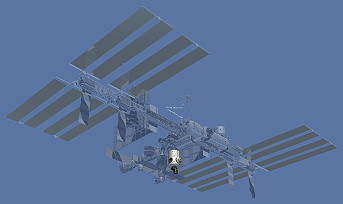 |
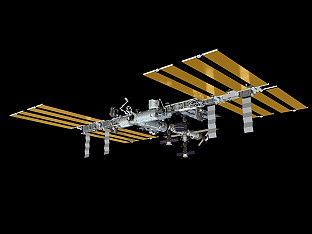 |
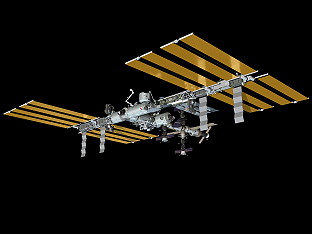 |
Photos
 |
 |
 |
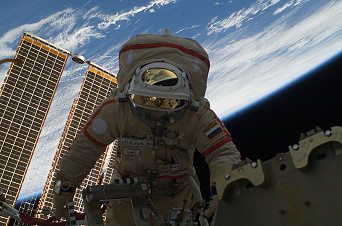 |
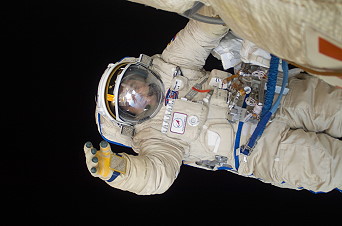 |
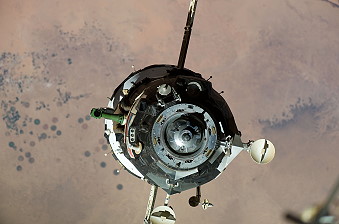 |
 |
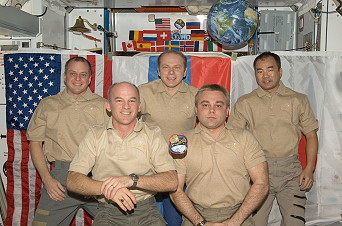 |
 |
 |
 |
 |
 |
 |
 |
 |
more EVA photos |
|
more onboard photos |
|
| © |  |
Last update on December 14, 2020.  |
 |